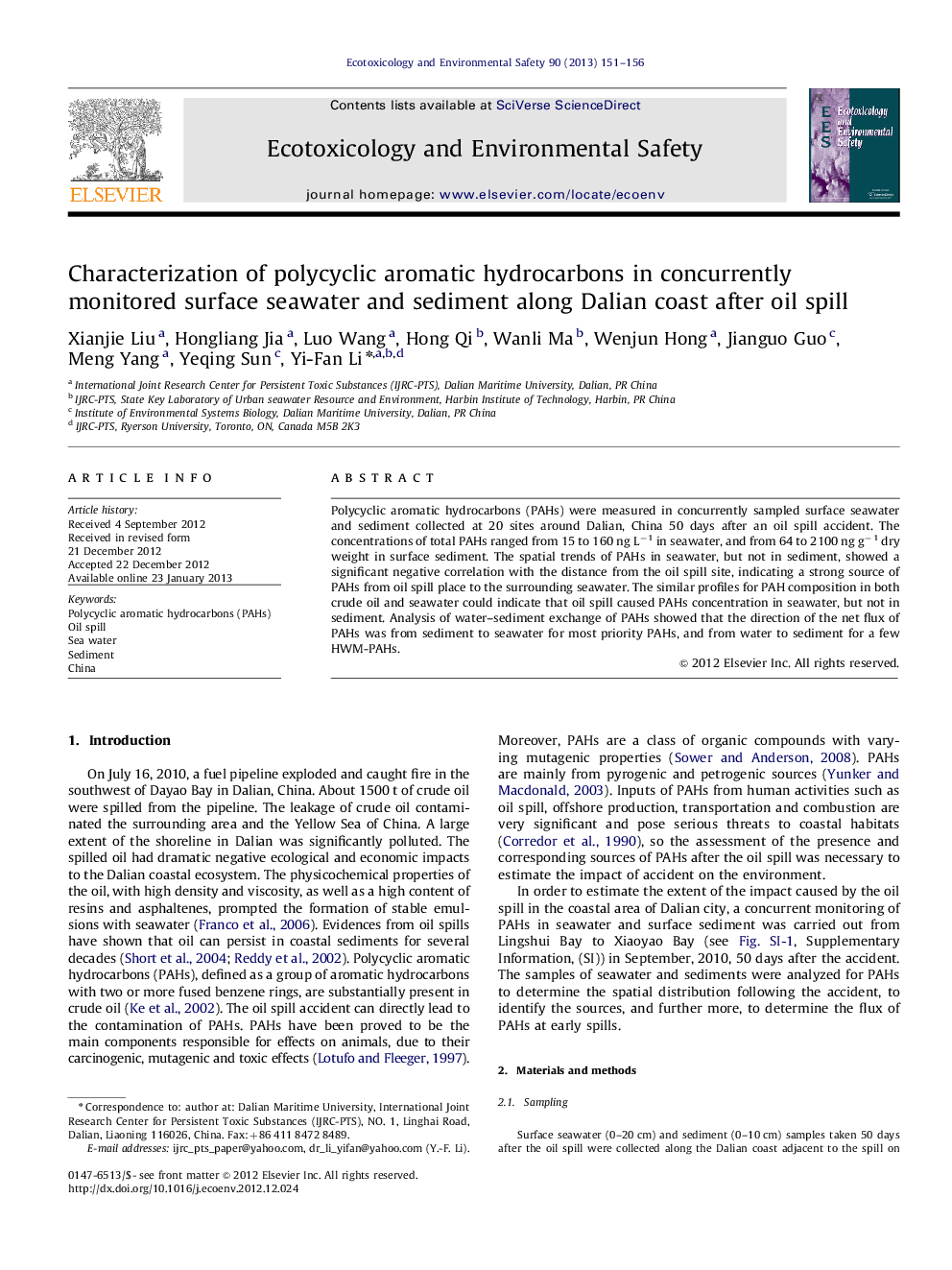| Article ID | Journal | Published Year | Pages | File Type |
|---|---|---|---|---|
| 6312445 | Ecotoxicology and Environmental Safety | 2013 | 6 Pages |
Polycyclic aromatic hydrocarbons (PAHs) were measured in concurrently sampled surface seawater and sediment collected at 20 sites around Dalian, China 50 days after an oil spill accident. The concentrations of total PAHs ranged from 15 to 160 ng Lâ1 in seawater, and from 64 to 2100 ng gâ1 dry weight in surface sediment. The spatial trends of PAHs in seawater, but not in sediment, showed a significant negative correlation with the distance from the oil spill site, indicating a strong source of PAHs from oil spill place to the surrounding seawater. The similar profiles for PAH composition in both crude oil and seawater could indicate that oil spill caused PAHs concentration in seawater, but not in sediment. Analysis of water-sediment exchange of PAHs showed that the direction of the net flux of PAHs was from sediment to seawater for most priority PAHs, and from water to sediment for a few HWM-PAHs.
Graphical abstractDownload full-size imageHighlights⺠PAHs were detected in surface seawater and sediment after oil spill. ⺠Oil spill increased the PAH level in seawater but not in sediment. ⺠Water/sediment exchange was performed to assess the fluxes of priority PAHs. ⺠Net flux is from sediment to seawater for most priority PAHs. ⺠Net flux is from water to sediment for BghiP and IcdP.
